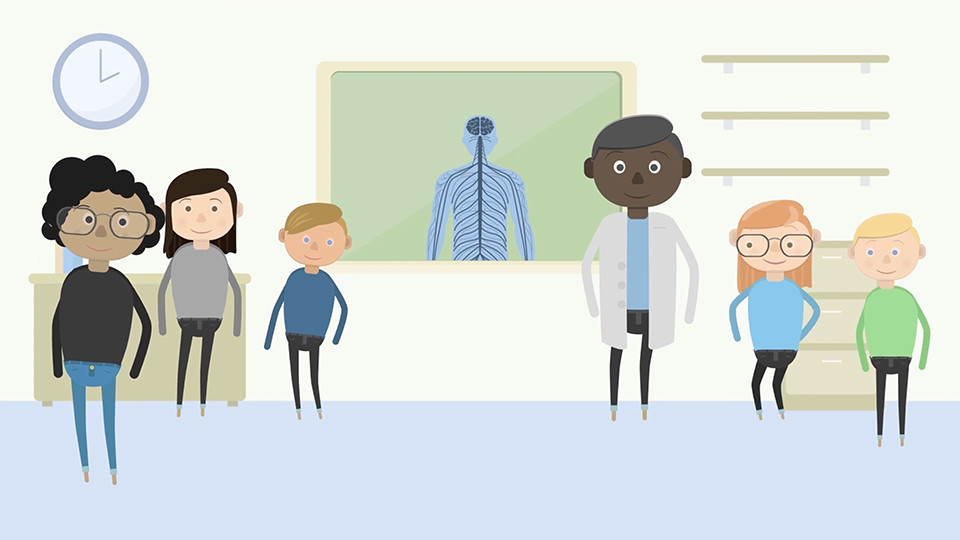Interested in unraveling the complexities of the human nervous system and helping patients with neurological disorders? Neurology is a fascinating and challenging medical specialty focused on the brain, spinal cord, peripheral nerves, and muscles. If you’re considering a career in this field, this guide outlines the steps on how to become a neurologist.
Step 1: Laying the Foundation with Undergraduate Education
Your journey to neurology begins with a strong undergraduate education. A four-year bachelor’s degree from an accredited college or university is the first crucial step. While there isn’t a mandatory pre-med major, focusing on science coursework is highly recommended. Majoring in biology, chemistry, or neuroscience can provide a solid foundation for medical school. Alongside rigorous academics, consider gaining experience in the medical field through volunteering or shadowing doctors. Preparing for and excelling in the Medical College Admission Test (MCAT) is essential during your undergraduate years, as it’s a significant factor in medical school admissions. Research medical schools early to understand their specific prerequisites and acceptance criteria.
Step 2: Navigating Medical School
Medical school is the next significant phase, typically lasting four years. In the United States, aspiring neurologists can choose between allopathic (MD) and osteopathic (DO) medical schools. Both paths provide comprehensive medical training. During medical school, seek opportunities to explore neurology. Many schools offer neurology clerkships, which provide valuable hands-on experience in the field. Consider doing an away rotation in neurology at a different institution to broaden your exposure and network. These experiences will help solidify your interest in neurology and provide a competitive edge when applying for residency.
Step 3: Residency – Specializing in Neurology
Residency is where you’ll specialize in neurology after medical school. Neurology residency typically involves a one-year internship in internal medicine (or two years in pediatrics for child neurology) followed by at least three years of specialized neurology training. Adult neurology training can be pursued through a categorical program (four years total) or an advanced program (three years after a separate one-year internship). Residency programs are accredited by the Accreditation Council for Graduate Medical Education (ACGME), ensuring standardized and rigorous training.
Step 4: Fellowship and Board Certification in Neurology
Many neurologists pursue further specialized training through fellowships, typically lasting one to two years. These fellowships allow for in-depth expertise in neurology subspecialties. After residency, neurologists become board-certified in neurology by passing the written examination administered by the American Board of Psychiatry and Neurology (ABPN). Subspecialty certification can then be obtained from either the ABPN or the United Council for Neurologic Subspecialties (UCNS) in various areas, including:
- Autonomic Disorders (UCNS)
- Epilepsy (ABPN)
- Behavioral Neurology and Neuropsychiatry (UCNS)
- Brain Injury Medicine (ABPN)
- Headache Medicine (UCNS)
- Clinical Neuromuscular Pathology (UCNS)
- Clinical Neurophysiology (ABPN)
- Geriatric Neurology (UCNS)
- Neural Repair and Rehabilitation (UCNS)
- Neurocritical Care (UCNS)
- Neurodevelopmental Disabilities (ABPN)
- Neuroimaging (UCNS)
- Neuromuscular Medicine (ABPN)
- Neuro-oncology (UCNS)
- Sleep Medicine (ABPN)
- Vascular Neurology (ABPN)
Step 5: Diverse Career Paths as a Neurologist
A career in neurology offers a wide array of options. Neurologists can choose from academic roles focused on research and teaching, private practice settings, or positions within the industry. Career settings include:
- Solo practice
- Neurology groups
- Multi-specialty groups
- Academic institutions
- Hospitals
- Government agencies
The field of neurology is continually evolving with new treatments and advanced imaging technologies, making it a dynamic and rewarding profession.
Getting Involved Early
Even before college, exploring resources can spark and nurture your interest in neurology.
For younger students (K-12): The American Academy of Neurology (AAN) offers the Neuroscience Is…Cool initiative, which uses engaging facts about the brain and nervous system to captivate young minds and foster a lasting interest in neuroscience.
Learn More
For college and medical students: The Neuroscience Is…Rewarding initiative highlights the significant impact of neuroscience on preventing, diagnosing, and treating numerous brain diseases. It aims to inspire medical students to choose neurology as their specialty.
Learn More
For medical students: The AAN provides free membership for medical students, offering benefits like free registration to the AAN Annual Meeting and access to diverse resources. Students enrolled in accredited medical or osteopathic schools, or graduate programs, are eligible for student membership.
Learn More
 Circles with people graphics in them, earth behind them
Circles with people graphics in them, earth behind them
Neurology is a field that allows you to make a real difference in people’s lives by diagnosing and treating complex conditions of the nervous system. If you are driven by intellectual curiosity and a desire to help others, a career in neurology may be an excellent path for you.
 Microscope graphic, pill bottle graphic, tablet with Seizure Tracker graphic, IV bag graphic
Microscope graphic, pill bottle graphic, tablet with Seizure Tracker graphic, IV bag graphic
 Doctor in white coat graphic holding reflex hammer, child sitting on exam table
Doctor in white coat graphic holding reflex hammer, child sitting on exam table
 Illustration: doctor in white coat, nervous system on board, kids learning
Illustration: doctor in white coat, nervous system on board, kids learning
Learn More about SIGN

